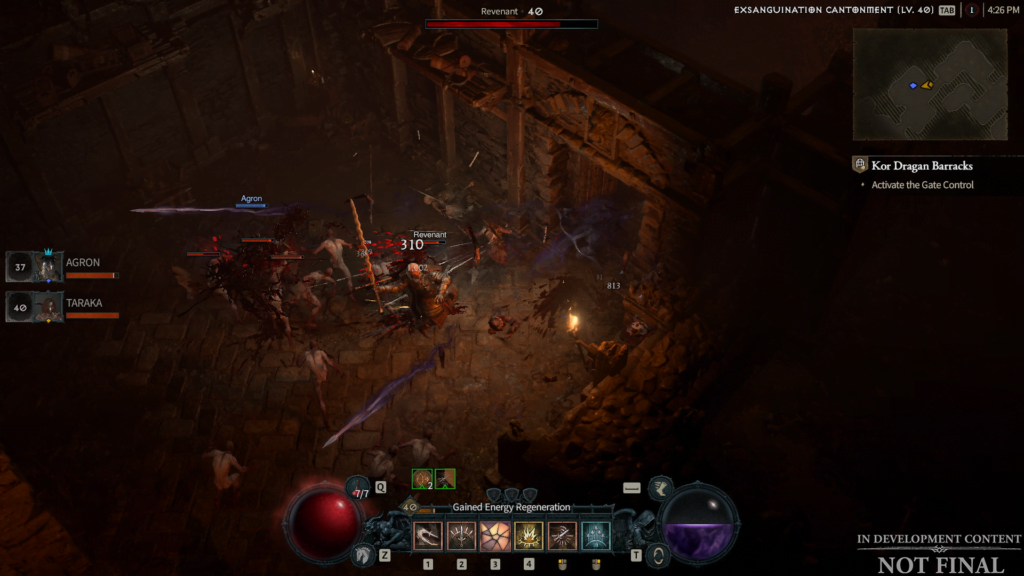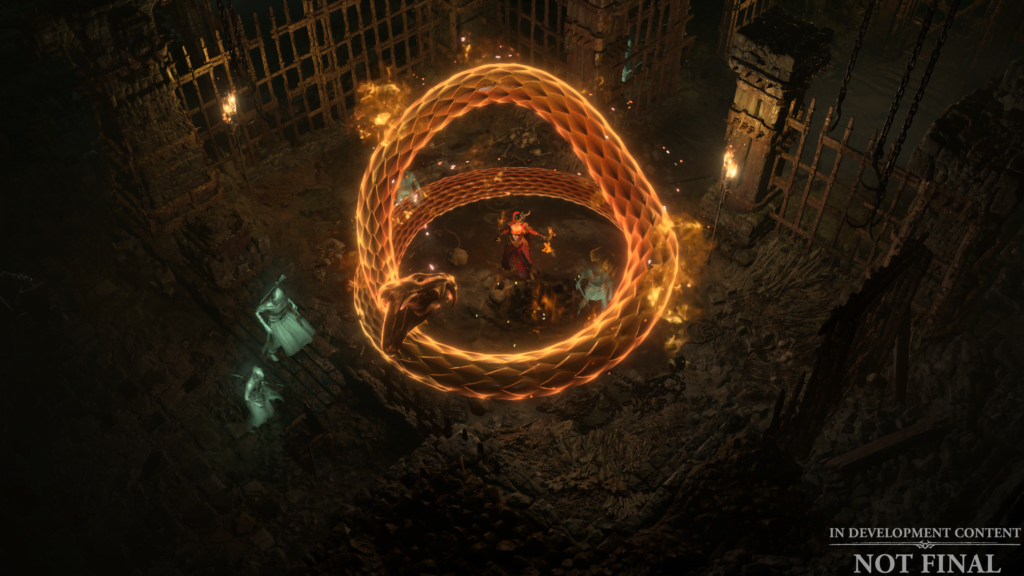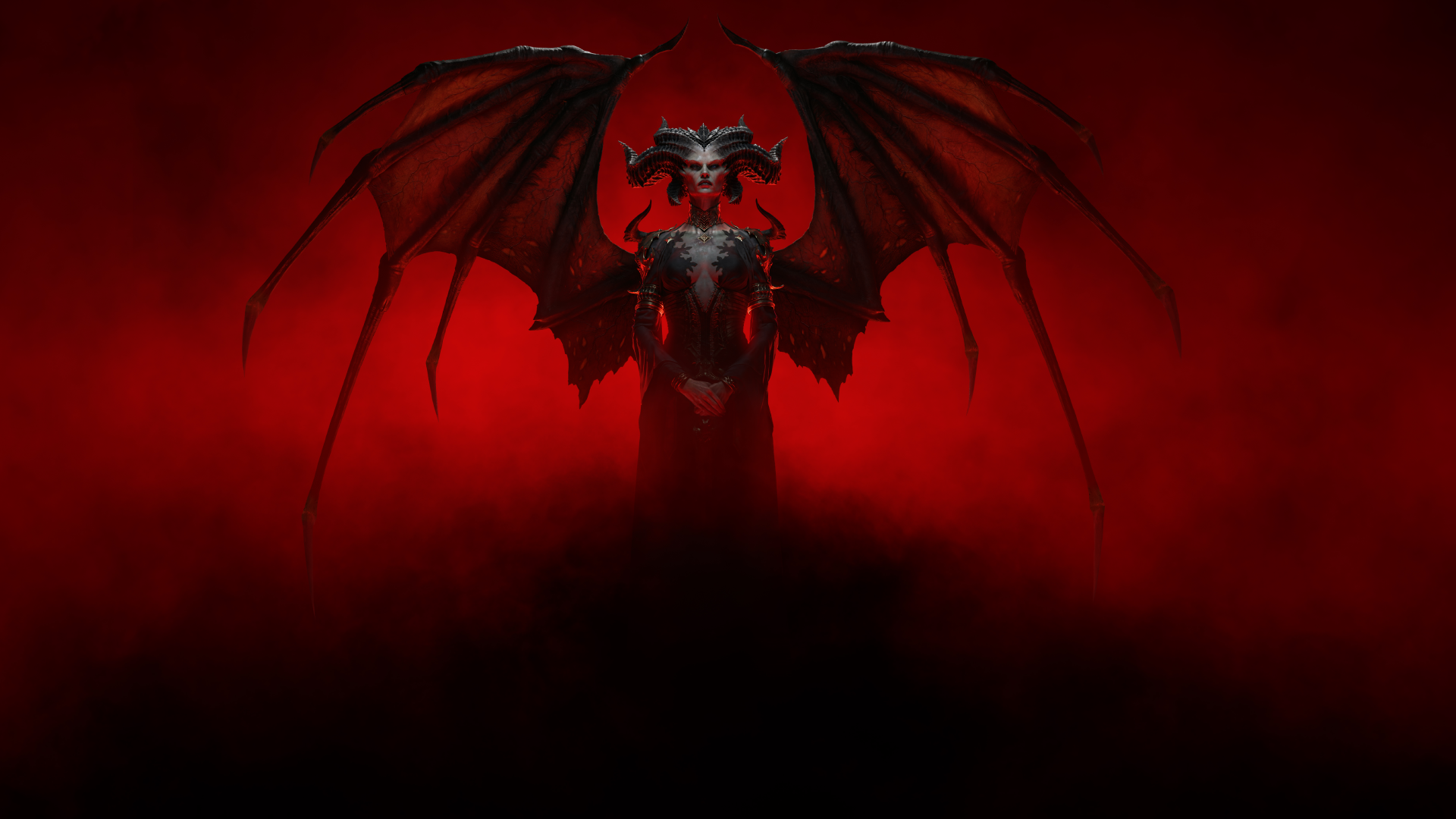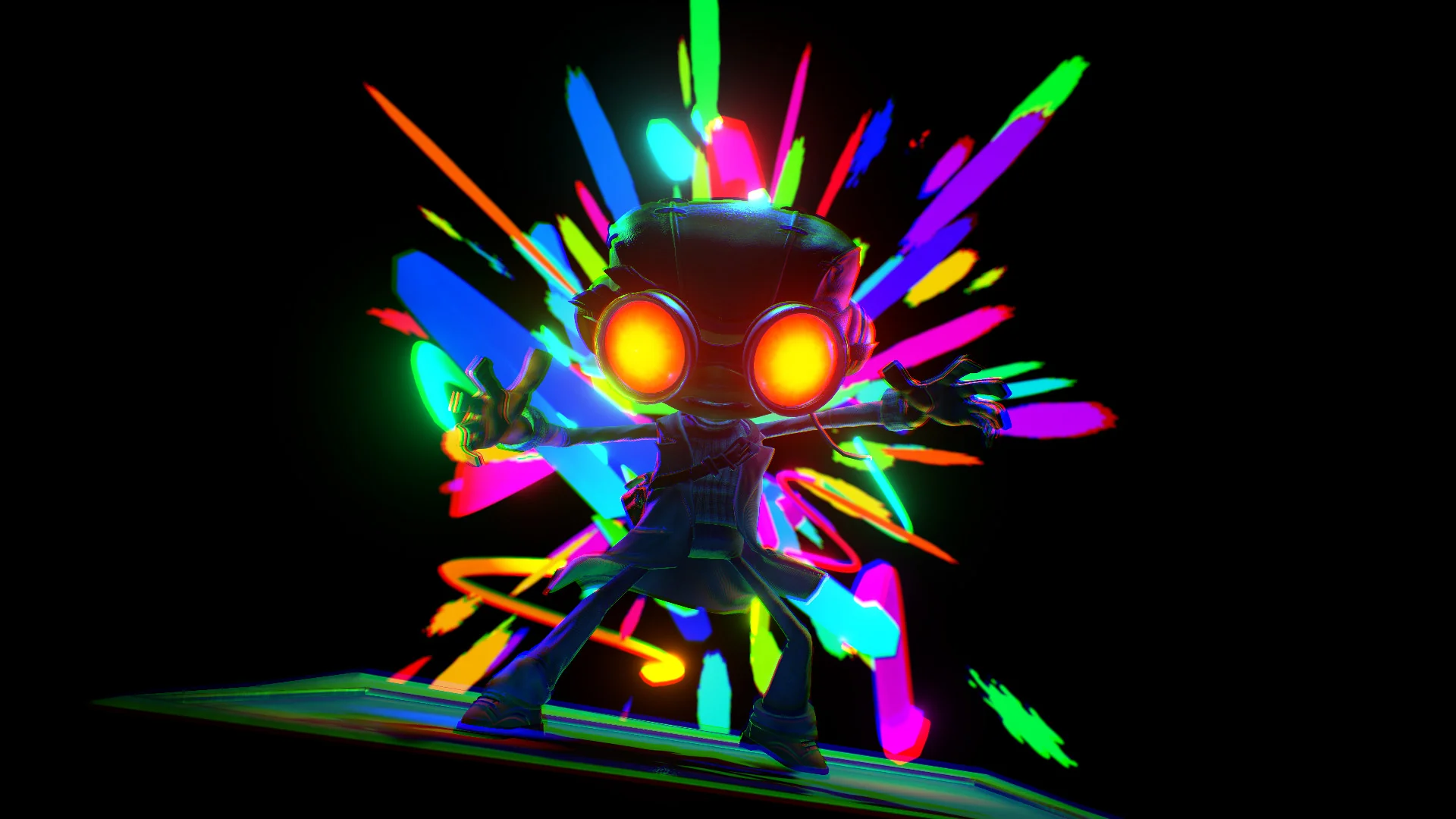Our first experience with Diablo 4 was waiting in a 49 minute queue to actually get into the game. Once in the game, the character select screen featured the now infamous group of heroes standing around the fire. Of Barbarian, Necromancer, Sorcerer, Rogue, and Druid, only Necromancer and Druid were unavailable. We selected Rogue, favoring ranged combat and entered the game.
Before entering the game, we were presented with a number of visual and audio accessibility options, many for colorblind players and dictation and text to speech options, which were a nice touch. It’s always nice to see developers making some effort towards furthering accessibility in their games.
The game itself begins right after the lengthy, “Birth of Lilith,” cinematic, finding our character in a cave set in a snowy, frozen landscape. Our journey north involved dispatching a number of low level wolf-like Wargs and undead enemies. The Rogue, while equipped with two daggers and a bow, only has use of the daggers until level two. At the level up, a skill point can be assigned to one of four basic skills. Two of these are melee based attacks and two are ranged. Each of these four attacks can be customized by up to five upgrades each, which increases each attack’s power in small increments. Each of these basic attacks can also be customized further by being enhanced by three enhancers each, also using skill points. Since you only have two skill shortcut slots at the bottom of your action bar, if we wanted to try out several of the basic moves, we would have to switch them out.

Our rogue eventually found a small town of people being plagued by monsters spilling from the nearby Icehowl Ruins, which serves as the game’s introductory dungeon. It isn’t that large and features rooms with sparkling treasure chests overflowing with randomized leveled loot as well as lots of undead enemies, many who are ranged, as well as a lot of melee focused demons called Fallen, a familiar staple of the Diablo franchise.
The end of the dungeon featured a massive boss who could teleport around, summon additional minions and swing a large club. Beating him gets you more gold and loot and lets you exit the ruins. Back in town, after some story events, we were tasked with finding a hermit’s cabin among the frozen landscape. Finding this hermit leads you to the first major town hub of the game. Reaching this point, the game thanks you for playing the beta, reminds you to buy the full game and notes that in the beta, you can explore the full map of the frozen peaks and level your character to a maximum of 25.
The large town hub, where we stopped, had a nice cozy inn and a wardrobe, which we could click on to change our appearance, as well as the stash, which we could throw all of our loot into if we wanted to share it between our created characters.
The new skill tree system is interesting and a marked departure from the system used in Diablo 3, where it was a simplified skill bar, enhanced with runes. If nothing else, Diablo 4 is something of a return to form, at least in terms of our early view of the skill tree system, which functions much more like a “proper” skill tree, similar to Diablo/Diablo 2.

Quickly switching to Sorcerer for a more magic focused build, the first four basic skills available to the sorcerer are Fire Bolt (burning), Arc Lash (a sideswiping electric whip, close range), Frost Bolt (high damage, slows enemies), and Spark (electricity projectile). All of these are viable in the early game, but we found Frost Bolt the most useful.
What’s interesting is that you only need two skill points assigned to these basic skills to move on to the next tier of abilities, known as the Core Skills. However, you can fully upgrade a basic ability with five points, plus one more skill point to further upgrade that ability. This brings up the inevitable question of when should you move to the next tier of skills. Core Skills are more powerful, but also use mana (or whatever resource the class uses) making basic skills handy when mana is low. Sorcerers get a choice of Chain Lightning, Fireball, Ice Shard, and Incinerate as their core abilities. We tried Fireball and Incinerate but they were nowhere near as effective at clearing out large enemy packs as Chain Lightning, which can bounce between up to six foes, with high damage, and can also bounce off your character for increased damage.
It’ll take four skill points in your core skills to move to the next tier, which for sorcerers, is the defensive abilities. These include Flame Shield, Ice Armor, Frost Nova, and Teleport. There’s also an adjacent ability called Glass Cannon, which offers increased damage output, but with the caveat of taking more damage from enemies. The next tier of abilities seems to focus on elemental based offensive abilities, such as Diablo 2 favorite Hydra, as well as Blizzard.
Overall, the game itself features a variety of differences from previous games in the series. The Diablo games, historically, have had a narrow focus, at least narratively. This is no longer the case, with Diablo 4 featuring large map areas with small towns dotting the landscape, accessible through waypoints, featuring townsfolk that will offer quests for you to complete at your leisure, with several main story quests taking part in various locations around the map as well.

Another new aspect of the game not yet seen in the Diablo series is the Renown system. By completing quests and clearing dungeons in specific areas of the map, you’ll gain renown in that area, which will eventually let you claim rewards that will affect all your characters, such as an increased number of potion charges (you start with four, but through renown you can gain more).
Clearing dungeons also grant you Aspects, which are class specific powers akin to the abilities you might find on legendary quality items. You can attach these abilities to your items at an enchanter in town.
The game runs really smooth and has a pretty clean UI. The familiar inventory system from previous games is back only it looks sleeker and more streamlined for its fourth time in the spotlight. There are also links to social functions from inside the game, such as messaging your buddies and the creation and joining of clans. From what we saw, the clan search option brings up a huge list of clans, many of them already full even at this early stage of the game.
With a mix of the familiar and the new, Diablo 4 seems poised to capture the attention of many series’ fans when it releases officially this June. For more on Diablo 4, stay tuned to Entertainium.





